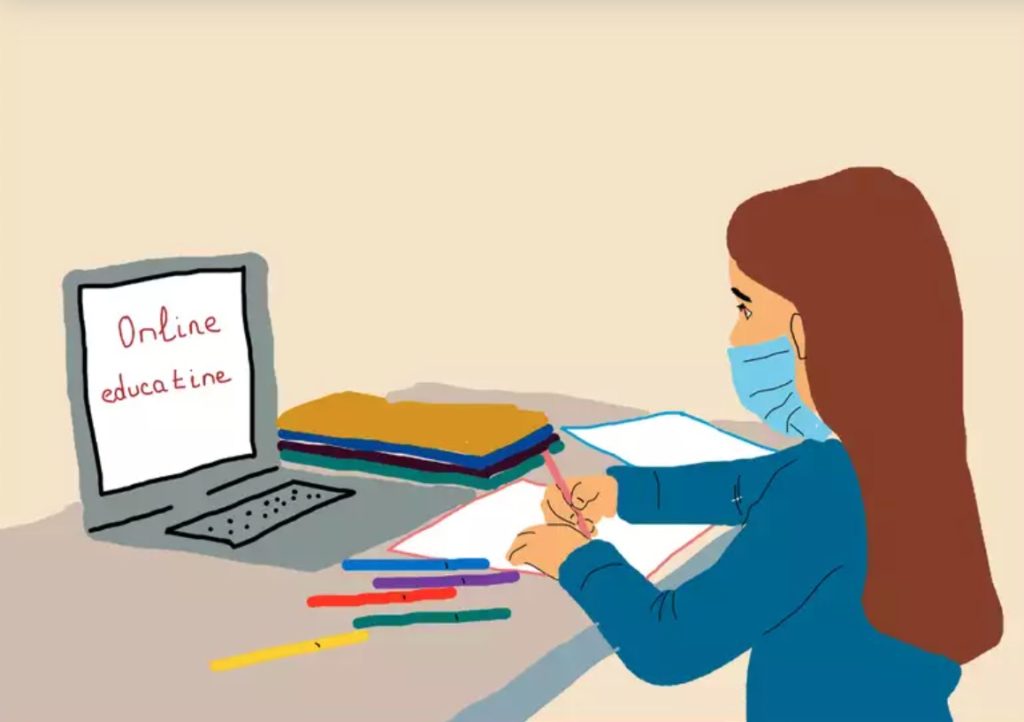
When my children’s school announced the abrupt end to the online school twilight zone with only a 7 day warning, I was in a panic. I’d become accustomed to lackadaisical morning routines and letting the children fend for themselves for lunches in the 24/7 home “cafeteria”. Not only did this mean that I could no longer wear pajama bottoms all day but I’d also have to start setting the alarm and barking commands at my children before they were even out of REM sleep.
I know I’m not alone in this. Most of our children have been used to sleeping in a bit later, catching up on schoolwork at their own pace, and sneaking off of online school to browse the endless entertainment categories on YouTube or social media. As parents or working parents, we’ve probably all done this too as a form of self-care and emotional survival during this uncertain time. Whether we’ve enjoyed this or not, all good (or bad) things must come to an end. The following are a few tips to make the transition back to in-person school less stressful on your child.
1. Get your child back on a sleep routine.
Even though we can function on less, everyone ideally needs 6-8 hours of quality sleep every night to perform at their best. Children and teens especially need at least 8-9 hours of quality sleep to be ready to learn and retain new information from school. The blue light emitted from cell phones, tablets, and laptops can cause interruption in the bodies natural melatonin production which can interfere with the quality of our sleep. Quality of sleep affects our ability to handle stress and regulate our emotions. Even if you feel like the bad guy, take those light emitting phones and digital devices away from your children at least an hour before bedtime, 2 hours is even better. Do yourself a favor and do the same for yourself.
2. Check in with your child daily about how they’re feeling.
Parents can unintentionally gloss over opportunities for real emotional exploration with their children by being too eager to hear the words “I’m fine.” Often times our own fears about not knowing exactly how to navigate uncomfortable or negative revelations make us speed through these important conversations with our children. Make sure to ask open-ended questions and really dig before closing the conversation. Instead of saying, “How was your day?” which gives children the chance to blow you off with an “It was fine”, alternatively ask a few different questions: “What was something hard that you did today?”, “Tell me a worry that you had today?”, and “What did you feel proud of yourself for today?” These give your child the opportunity to be introspective about their feelings which can launch a really healthy conversation about all the emotions they’re carrying.
3. Normalize your child’s worries.
As parents we sometimes feel like we have to be the strong ones, that we have to know all the answers, and have everything figured out. While it’s healthy and helpful that we regulate our own emotions during stressful times so that we don’t add to our child’s anxiousness or distress, it can be beneficial to be honest with our children about some of what we’re feeling. Saying something like, “I also feel uncertain about how the social distancing will look in the classroom with so many other students but I think everyone is going to keep doing their best to stay healthy and safe,” or “I’ve been enjoying my comfy pajamas too, this is going to feel different for me too.” Any ways that you can help your child feel normal will decrease the isolation they may feel.
4. Exercise. Exercise. Exercise.
If your child is struggling with anxiousness or worry, exercise can help to balance out their moods and emotions. Exercise is proven to reduce levels of anxiety and to boost mood. If group sports or activities are still restricted, children can still get plenty of exercise in other ways. Climbing stairs, jumping jacks, jump rope, city parks, nature hikes, or even find some free online exercise videos for kids. Where there is a will, there is a way.
When all else fails: This too shall pass. Just know that change is often difficult for most people and that with time, things will usually begin to feel better.
Author: Kellie Tomlin, LCSW. Kellie Tomlin is a licensed clinical social worker and therapist.


